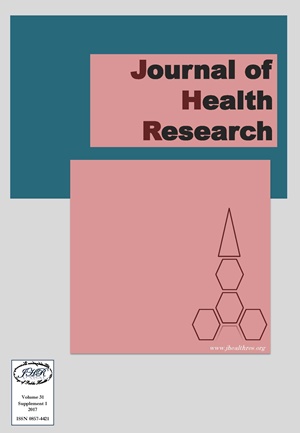Kaemperia parviflora Extract Inhibits Caspase-Dependent Apoptosis Stimulated by H. pylori Infection
Keywords:
Helicobacter pylori, Kaemperia parviflora, Apoptosis, Caspase-3/7, Caspase-8, DNA fragmentationAbstract
Background: Apoptosis process is one of the major pathogenesis in gastric cancer causing by Helicobacter pylori infection. Kaempferia parviflora (KP) has been traditionally used for treating gastrointestinal tract disorders, which exhibited anti-Helicobacter pylori, anti-inflammatory and
anti-gastric ulcer. Our study aimed to evaluate the anti-apoptosis effects of KP extract in H. pylori-infected gastric epithelial cells.
Methods: The cytotoxic effect of KP extract was assessed by MTT assay in AGS cells at various concentrations and incubation times. The level of caspase-8 and caspase-3/7 activities and DNA fragmentation were determined by luminescence assays and ELISA, respectively.
Results: KP ethyl acetate extract significantly decreased AGS cells viability in dose and time-dependent manners, no cytotoxic effect was observed at 8 and 16 µg/ml of KP extract even 24 hours. H. pylori activated apoptosis mainly via caspase-3/7 more effectively than caspase-8. Interestingly, KP extract significantly inhibited both caspase-3/7 and caspase-8 in H. pylori infected and uninfected cells, although DNA fragmentation was not suppressed.
Conclusions: Thus, KP extract may be a prominent alternative therapy for gastric cancer induced by
H. pylori infection through the inhibition of initiator caspase-8 and effector caspase-3/7 which play important roles in apoptosis pathway.







